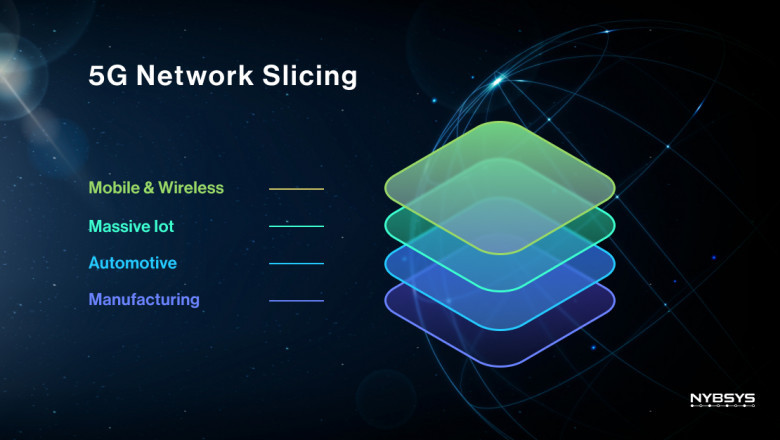views
The evolution of 5G has introduced groundbreaking capabilities that are redefining how industries operate and connect. Among these innovations, network slicing stands out as one of the most transformative technologies in the 5G ecosystem. With the ability to create multiple virtual networks on a shared infrastructure, 5G network slicing offers tailored connectivity for diverse use cases, enabling unprecedented levels of flexibility, security, and efficiency. This article delivers comprehensive market intelligence on the 5G Network Slicing Market, highlighting its strategic growth areas, industry-specific applications, challenges, and competitive dynamics shaping the global landscape.
What Is 5G Network Slicing?
At its core, 5G network slicing is a method of dividing a single physical 5G network into multiple virtual slices, each designed to meet specific application or business requirements. These slices operate independently, with their own network resources, performance parameters, and security protocols. This allows service providers to deliver differentiated services to various customer segments without building separate infrastructures.
For example, a network slice can be optimized for ultra-low latency for autonomous vehicles, while another can prioritize high throughput for streaming services, and yet another can provide high reliability for remote healthcare.
Strategic Growth Drivers
Several strategic factors are fueling the growth and investment in the 5G Network Slicing Market:
-
Enterprise Digital Transformation: Businesses across sectors are demanding customized connectivity to support cloud-native applications, real-time data processing, and mission-critical services.
-
IoT and Edge Computing Expansion: The rise of IoT devices and edge computing applications necessitates low-latency, high-performance connections—exactly what slicing offers.
-
Monetization Potential: Network slicing enables telecom providers to introduce tiered service models with differentiated quality, performance, and pricing structures tailored to customer needs.
-
Cloud-Telecom Partnerships: Collaborations between telecom operators and cloud giants like AWS, Google Cloud, and Microsoft Azure are streamlining slice management and orchestration.
Industry-Specific Applications
The true strength of network slicing lies in its versatility across industries. Here's how different sectors are leveraging or preparing to integrate this technology:
-
Healthcare: Remote surgeries, AI diagnostics, and telemedicine platforms rely on ultra-reliable, low-latency connections supported by dedicated slices.
-
Manufacturing: Smart factories utilize network slicing to connect machines, sensors, and control systems with low-latency and secure communications.
-
Automotive: Vehicle-to-everything (V2X) communication and autonomous driving demand specialized network slices to handle high-speed, real-time data exchange.
-
Public Safety: Emergency services require high-priority, isolated slices that can function seamlessly during disasters and high-traffic events.
-
Retail and Entertainment: AR/VR applications, real-time customer engagement, and digital payments benefit from slices configured for high bandwidth and responsiveness.
This sector-wide adaptability is one of the key elements behind the rapid market expansion expected over the next decade.
Competitive Landscape and Strategic Moves
The 5G network slicing ecosystem includes telecom operators, network equipment manufacturers, cloud service providers, and system integrators. Leading companies such as Ericsson, Nokia, Huawei, Samsung, and ZTE are advancing slicing solutions with full-stack capabilities.
On the telecom side, major players like Verizon, AT&T, SK Telecom, Deutsche Telekom, and NTT Docomo are actively piloting and deploying network slicing use cases. These operators are exploring innovative business models such as:
-
Service-Level Agreements (SLAs) for guaranteed performance.
-
On-Demand Slicing Platforms that allow enterprises to customize their network usage dynamically.
-
Subscription-Based Slicing Services for SMEs and startups needing scalable connectivity solutions.
Strategic mergers, acquisitions, and partnerships are also reshaping the landscape, with emphasis on integrating AI, cloud, and security capabilities to improve slice orchestration and monetization.
Challenges Impacting Market Progress
Despite the immense potential, the 5G Network Slicing Market faces several barriers:
-
Operational Complexity: Managing multiple slices with distinct configurations requires advanced automation and real-time orchestration.
-
Security and Isolation: Ensuring complete isolation and protection of data across slices on shared infrastructure is critical and technically demanding.
-
Lack of Standardization: Fragmentation in standards and protocols makes interoperability across vendors and borders a challenge.
-
High Infrastructure Costs: The need for 5G standalone (SA) core networks and edge computing capabilities involves significant capital investment, slowing down adoption for smaller operators.
-
Unclear Monetization Models: Many telecom providers are still experimenting with viable pricing structures and business use cases for slicing.
Overcoming these challenges will be essential for the market to reach full maturity.
Future Outlook
The future of the 5G Network Slicing Market is deeply tied to advancements in AI, automation, and real-time analytics. These technologies will drive intelligent, autonomous slice management, allowing networks to self-optimize based on changing conditions and user behavior.
As regulatory frameworks evolve and industry standards solidify, more enterprises are expected to adopt slicing as a core part of their digital infrastructure strategy. By 2030, network slicing is anticipated to become a foundational service, not just for telecom operators, but across all digitally-driven businesses.
Conclusion
The 5G Network Slicing Market is poised to transform the telecommunications industry and enterprise connectivity models across the globe. Through intelligent virtualization and tailored network performance, slicing is enabling the next wave of digital innovation. As adoption grows and strategic alliances deepen, market intelligence will remain vital in navigating challenges, shaping opportunities, and unlocking the full potential of this revolutionary technology.





















Comments
0 comment